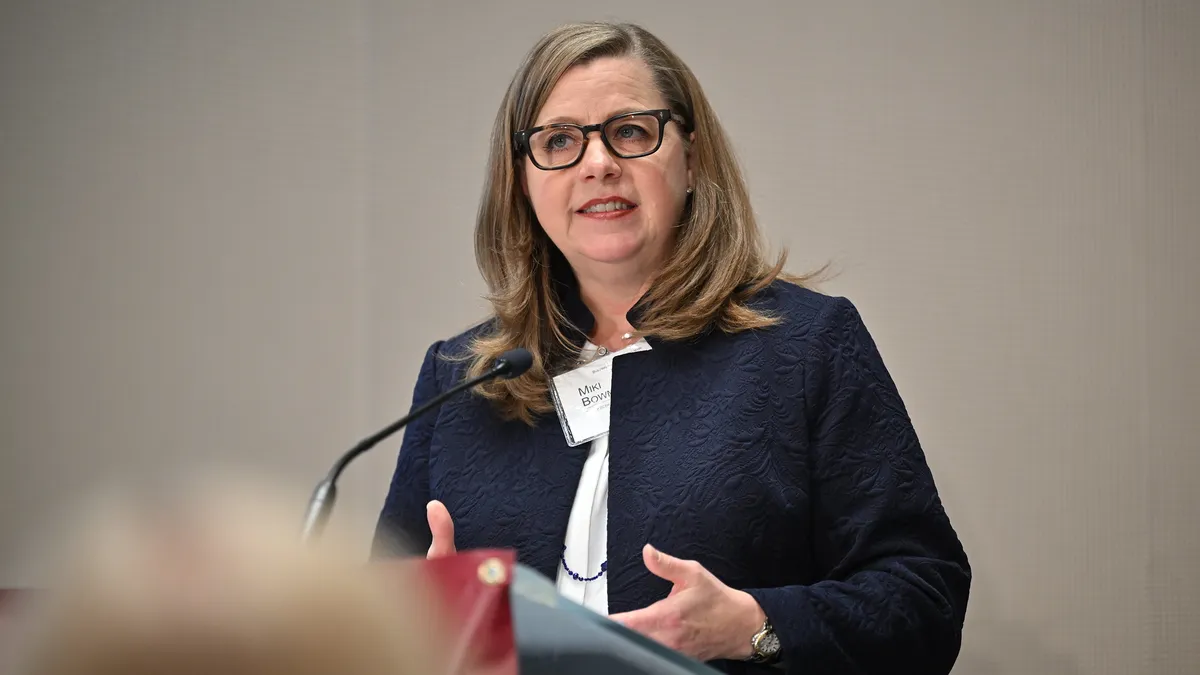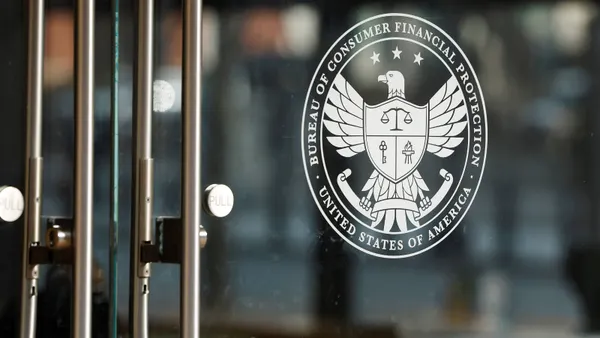Tier 1 capital requirements would drop by 27% for the bank subsidiaries of the nation’s eight global systemically important banks under a proposal the Federal Reserve Board issued Wednesday.
Fed governors voted 5-2 in favor of the proposal, which would cut the enhanced supplementary leverage ratio – a measure of how much capital banks must hold relative to their assets – to between 3.5% and 4.5% for bank holding companies and their depository institution subsidiaries. That’s down from 5% for the former and 6% for the latter.
The proposal would also reduce total loss absorbing capacity by 5% and long-term debt requirements by 16%.
The eSLR reduction would free up $210 billion in capital requirements. And though that represents a tier 1 drop of more than a quarter for bank subsidiaries, holding companies would see a much more modest 1.4% reduction.
Fed Chair Jerome Powell, in testimony on Capitol Hill, told lawmakers the potential changes are meant to make the eSLR a backstop instead of a binding constraint for banks. Such a move also would free banks to trade more heavily in the $29 trillion Treasuries market, proponents argue.
Skeptics, including Sen. Elizabeth Warren, D-MA, have said easing the eSLR would not “free up a pot of money for banks to lend more or buy more assets.”
Rather, “megabanks appear motivated by the short-term benefits of capital deregulation for shareholders and executives: increased dividends, buybacks and bonuses,” Warren wrote Monday in a letter to Fed Vice Chair for Supervision Michelle Bowman.
Bowman, in a statement Wednesday, asserted the proposal’s changes “at the bank level do not enable them to increase capital distributions to shareholders, as their holding companies would generally remain constrained by risk-based capital requirements.”
Further, GSIB holding companies “are required to contribute assets to their bank subsidiaries to cover capital shortfalls,” she said.
However, Fed Gov. Michael Barr said Wednesday’s proposal overestimates “the expectation that holding companies serve as a source of strength to their banks,” citing Silicon Valley Bank’s failure in 2023.
Barr and fellow Fed Gov. Adriana Kugler were the two officials who voted against the proposal.
“Significantly lowering the eSLR in this manner increases the incentives firms have to game their risk-based requirements by lowering their risk-weighted asset density,” Barr said. “This … is precisely what leverage ratios are designed to block.”
Bowman, meanwhile, asserted Wednesday’s proposal would “help to build resilience in U.S. Treasury markets, reducing the likelihood of market dysfunction and the need for the Federal Reserve to intervene in a future stress event.”
Barr dismissed the argument, saying Treasury market intermediation “primarily happens at the broker-dealer, but the overwhelming bulk of the capital depletion under the proposal happens in the bank.”
“While firms could, in theory, use the additional headroom provided under the proposal to increase their participation in Treasury market intermediation, it is not clear that result would occur,” Barr said. “Firms could just as easily shift to other activities with low risk-based capital requirements and significantly higher returns.”
The Fed is seeking public comment on the proposal for 60 days. Bowman, for one, noted a number of alternatives could include modifications to the calculation of the SLR’s denominator and excluding Treasuries from the denominator.
Barr, in his statement, said he could “support a much more modest adjustment to the eSLR were it to be accompanied by prompt, full and effective implementation of the Basel III Endgame reforms to risk-based capital.”
Barr served as the primary author of a 2023 proposal that would have increased capital requirements for the U.S.’s G-SIBs by 19%. That proposal saw profound pushback from lawmakers and trade groups alike, and it was eventually scaled down to a 9% increase before being abandoned ahead of President Donald Trump’s reelection.
The Federal Deposit Insurance Corp. and the Office of the Comptroller of the Currency each backed the Fed’s proposal in separate statements. Regulators set Aug. 26 as the deadline for public comments














